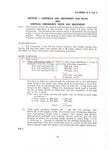The RAE looked at self sealing fuel tanks for the Lancaster, but the 1000lb weight penalty was deemed too great. It also investigated sub-dividing the large wing root tanks on the Lancaster but I haven't been able to find out if this ever happened.
Cheers
Steve
Are you sure you're not talking about armoured fuel tanks, because according to the Lancaster Pilot's Notes, the tanks were self-sealing?


